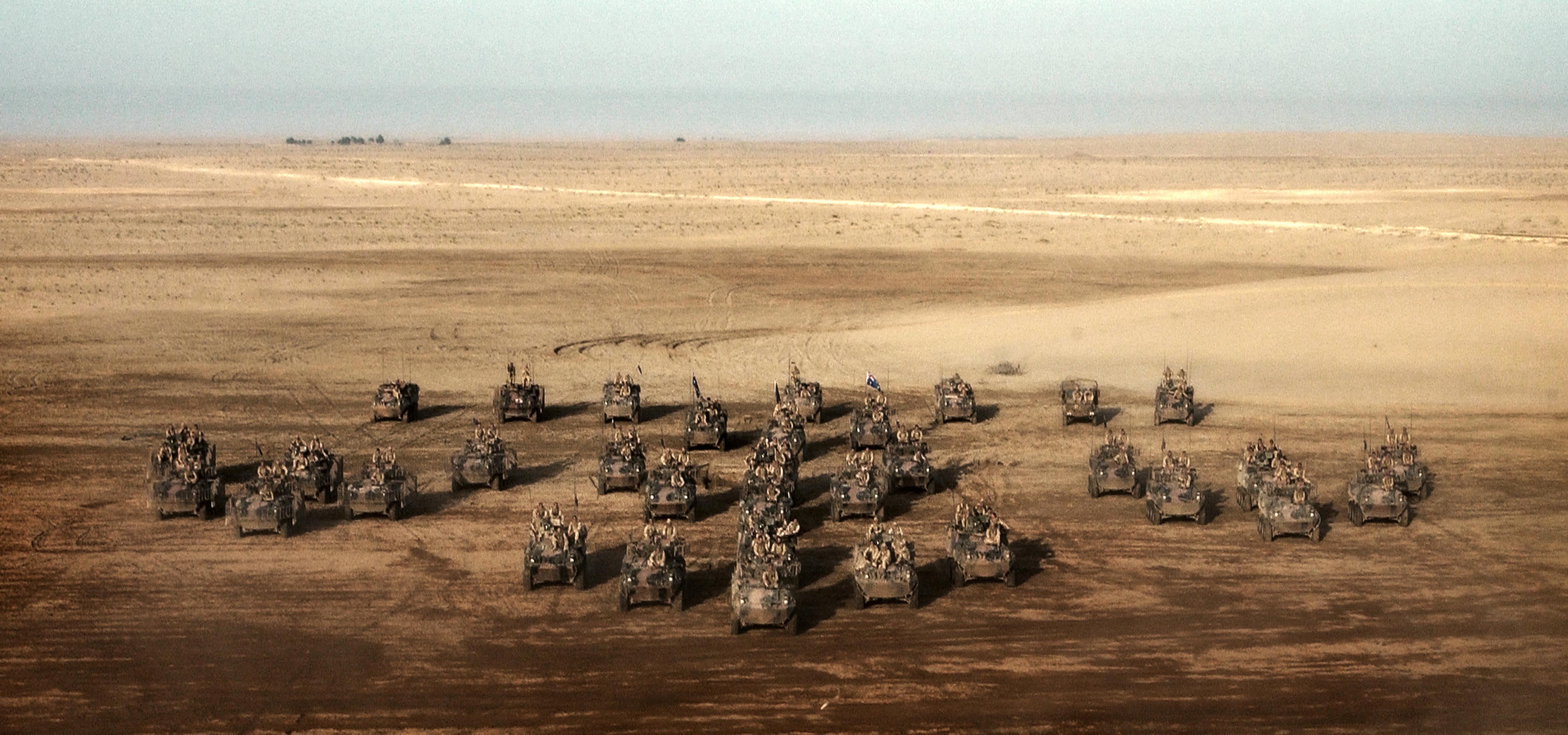
Originally published 13 February 2014.
While high profile Defence projects like the Joint Strike Fighter and future submarine have received plenty of coverage, much less has been written about LAND 400—a proposed $10 billion purchase of armoured land combat vehicles for Army. Recent media reports focus on the politically-charged question of where the vehicles might be built, with state governments vying for potential employment opportunities. Of greater strategic importance however, is the broader debate about the future of Army and its place in Australia’s defence strategy. The debate is fundamental to many capability projects but the key question for LAND 400 is whether Army’s primary role should be leading non-conventional missions such as the Timor-Leste and Solomon Islands stabilisation missions, or fighting conventional wars.
LAND 400 is one of Defence’s most expensive capability projects—in fact it’s one of the big four identified by Defence seniors (PDF, p. 22) as having the potential to distort the Defence Capability Plan. It’s intended to provide Army with a suite of armoured vehicles to bolster its close combat capability. The project is expected (PDF, pp. 75–76) to result in about 1,100 new vehicles that will replace or enhance (PDF, p. 3) the capabilities currently provided by the Vietnam vintage Armoured Personnel Carrier (M113), Australian Light Armoured Vehicle (ASLAV) and Protected Mobility Vehicle (PMV) fleets.
It’s still early days but there are some key milestones on the horizon, with the government to give in-principle approval (‘first pass’) and release preliminary tender guidelines to industry by 2015. There are also questions of industry capacity to deliver and the role that Australian industry might play. These issues however, won’t determine LAND 400’s success—that will turn on the government clarifying the role of Army in Australia’s defence policy.
Put simply, there’s tension between Defence’s strategic guidance as provided by government and LAND 400’s operational guidance as developed within the department. On the one hand, strategic guidance provided by the 2013 Defence White Paper focuses on non-conventional missions in Australia’s immediate neighbourhood. It says that (PDF, p. 39):
We must ensure that Australia maintains the capabilities needed to support the ADF’s Principal Tasks of deterring and defeating attacks against Australia and contributing to security in the South Pacific and Timor-Leste. …These operational drawdowns [in Afghanistan, Timor-Leste and Solomon Islands] will be used to increase the ADF’s capacity to conduct stabilisation, humanitarian assistance and disaster relief [HADR], reconstruction and peacekeeping operations in the Indo-Pacific region and particularly in the South Pacific, in line with our assessments of the continuing need for such assistance.
Land forces have a primary role in these tasks, suggesting that LAND 400 should be shaped by their operational requirements in those environments.
On the other hand, LAND 400’s operational guidance focuses on high-intensity conventional warfighting in the Asia-Pacific. The Concept of Operations (PDF, pp. 8–9) requires LAND 400 platforms that are capable of defeating a ‘comparable’ and ‘adaptive’ enemy, including through amphibious assaults. This document describes the ‘desired endstate’ of LAND 400 as providing ‘enhanced land combat lethality, survivability, situational awareness, close combat mobility and combat power in order to win the land battle over time’.
The contrast between Defence’s strategic guidance and LAND 400’s operational guidance reflects two contending priorities for Army: leading non-conventional missions vs. fighting conventional wars. Ideally, Army should be able to carry out both of these tasks, but, as always (PDF, p. 45), some degree of choice must be made between flexibility and capacity. Significant investments in high-intensity conventional combat capabilities could usurp Defence resources required to build the skills and larger infantry numbers needed for major stabilisation operations , and vice versa.
So the Government must decide which of these two roles should take priority for Army within Australia’s overarching defence strategy. This is a first-order task because their capability requirements are considerably different—and without strategic guidance that clearly defines Army’s priorities, Defence has no rigorous basis upon which to consider Army’s capability choices. If only for the sake of the $10 billion attached to LAND 400, the Government must determine whether Army’s primary expeditionary role is leading non-conventional missions or fighting conventional wars.
Daniel Nichola is an intern at ASPI. Image courtesy of Australian Defence Image Library.